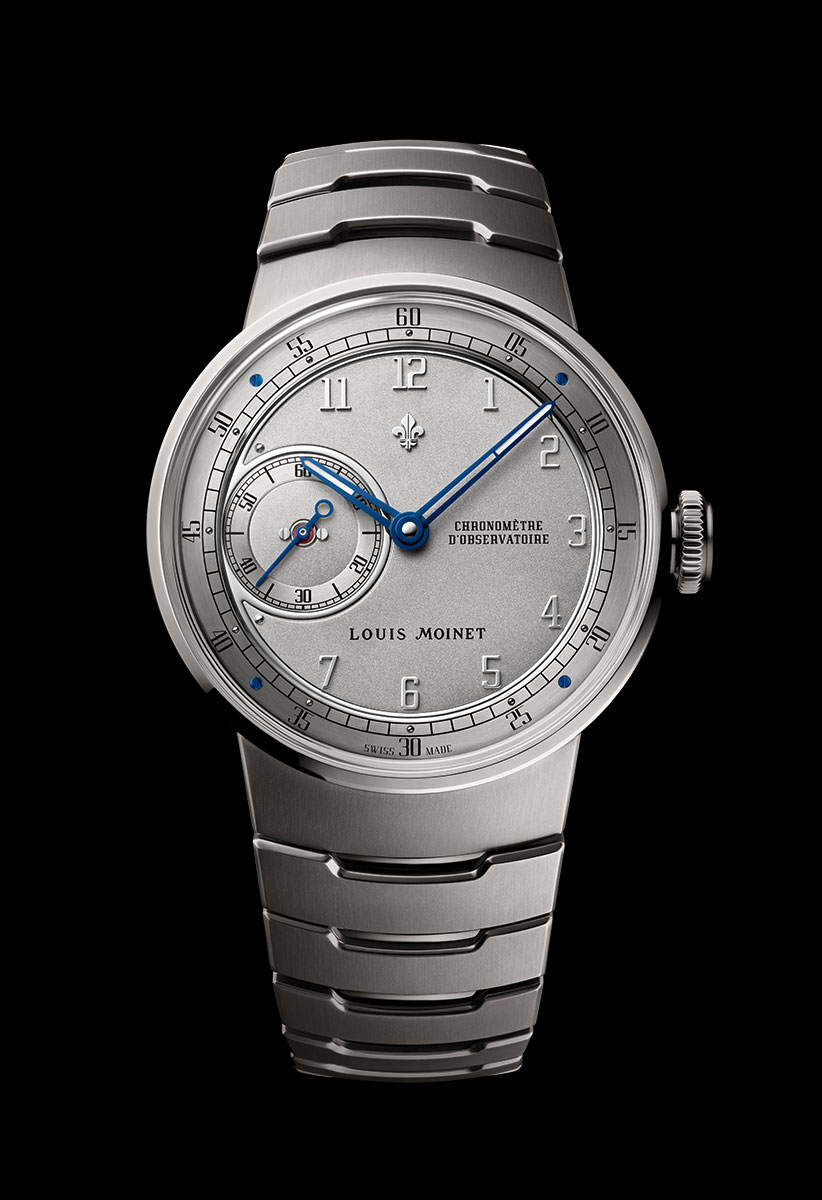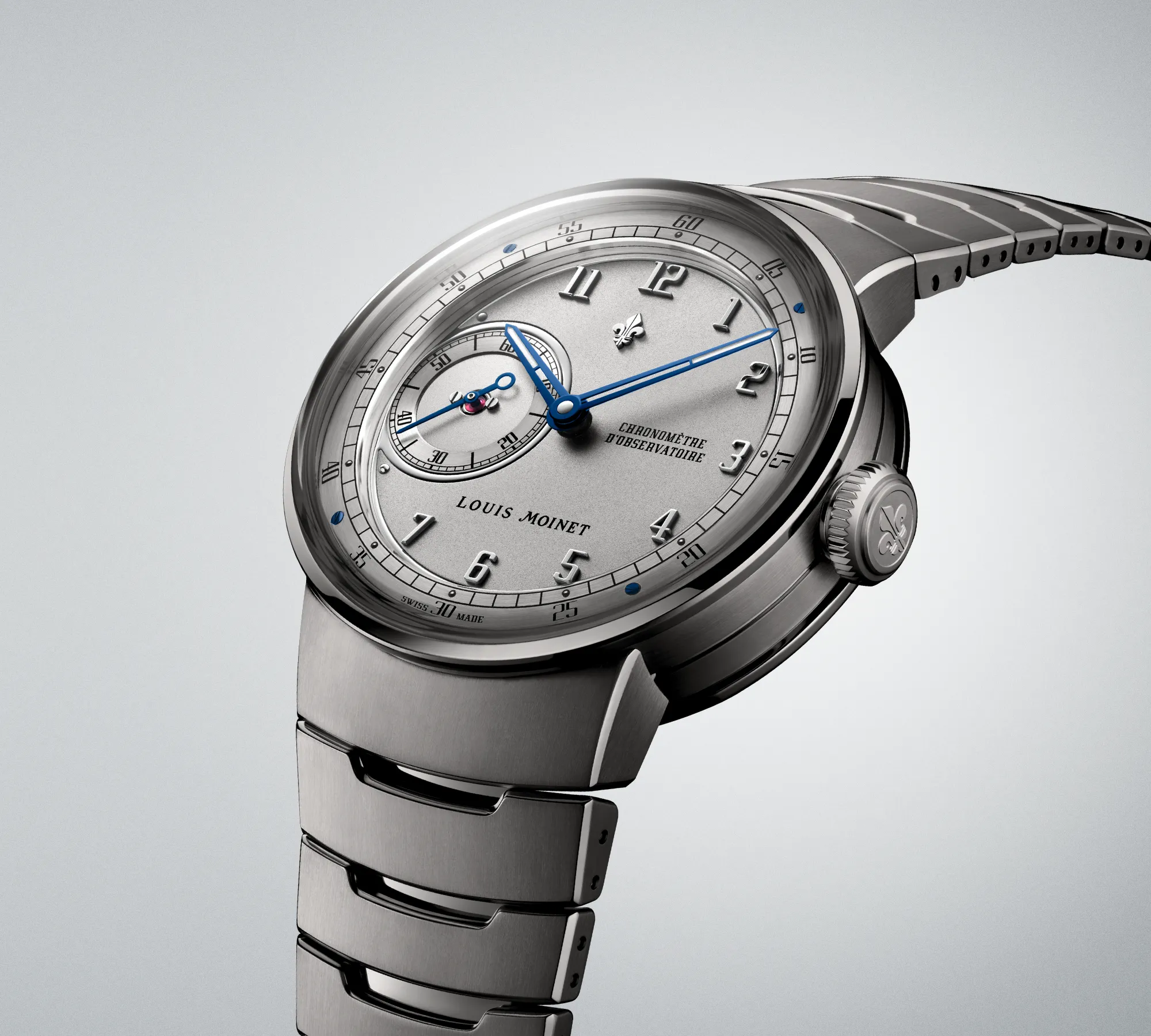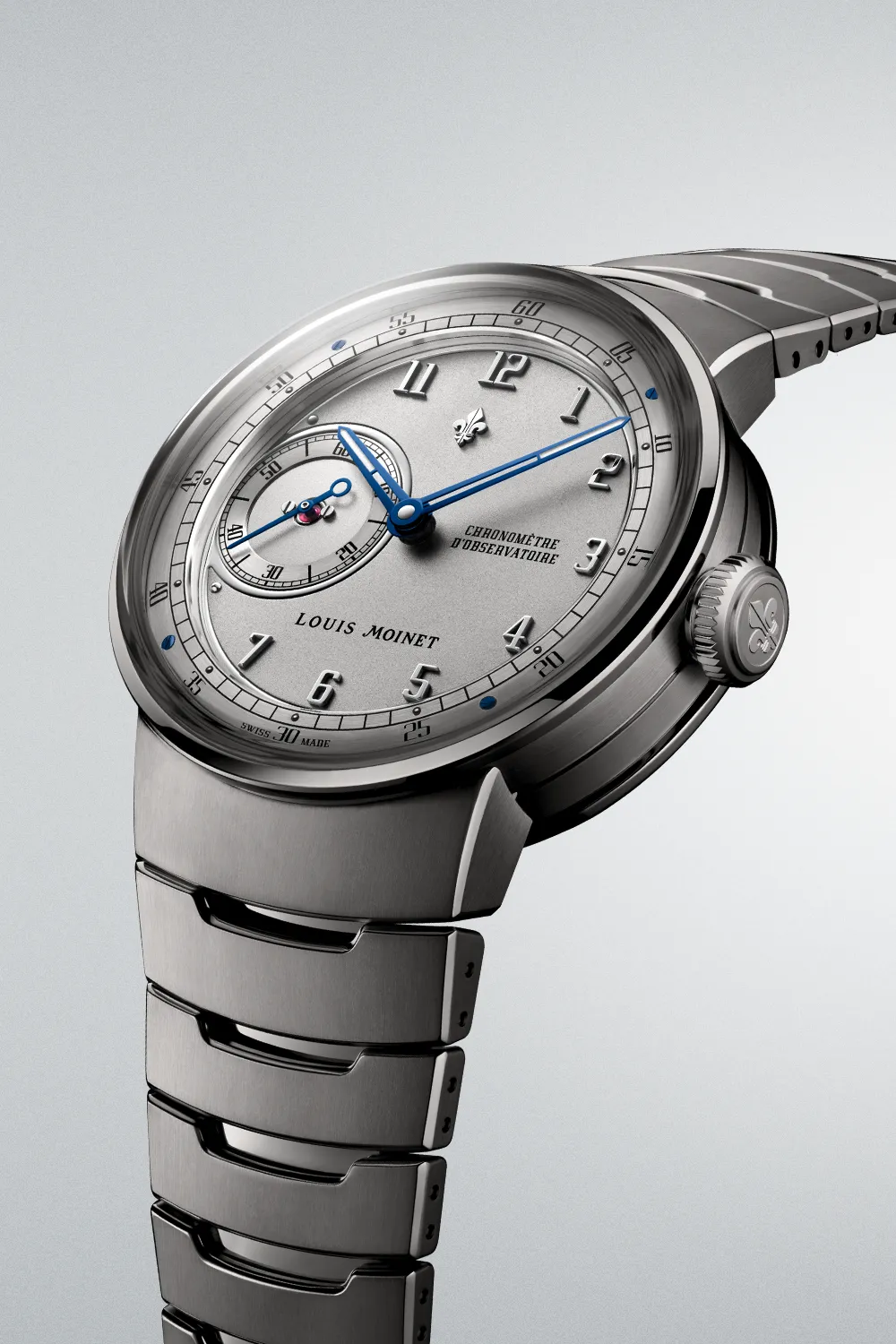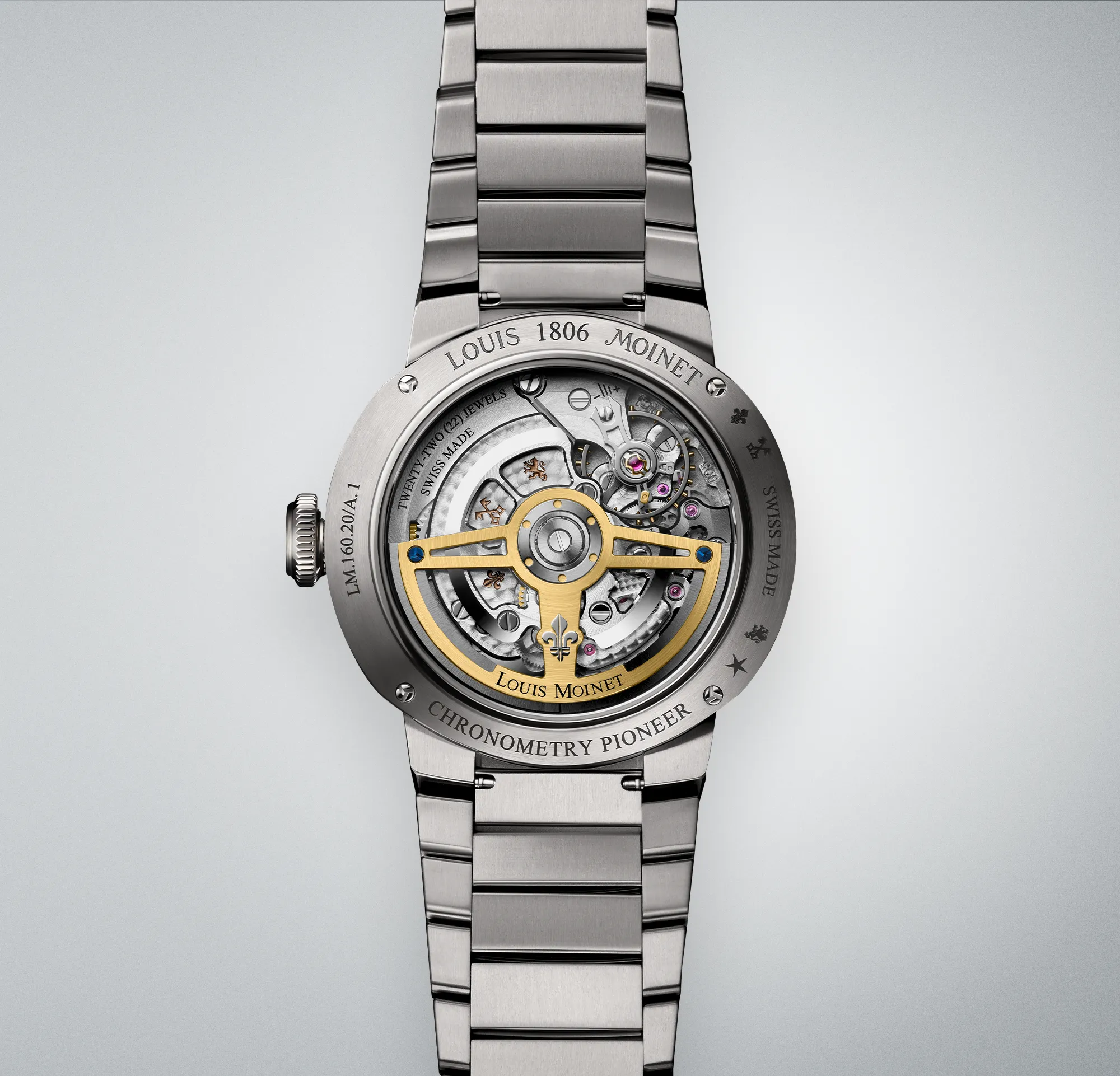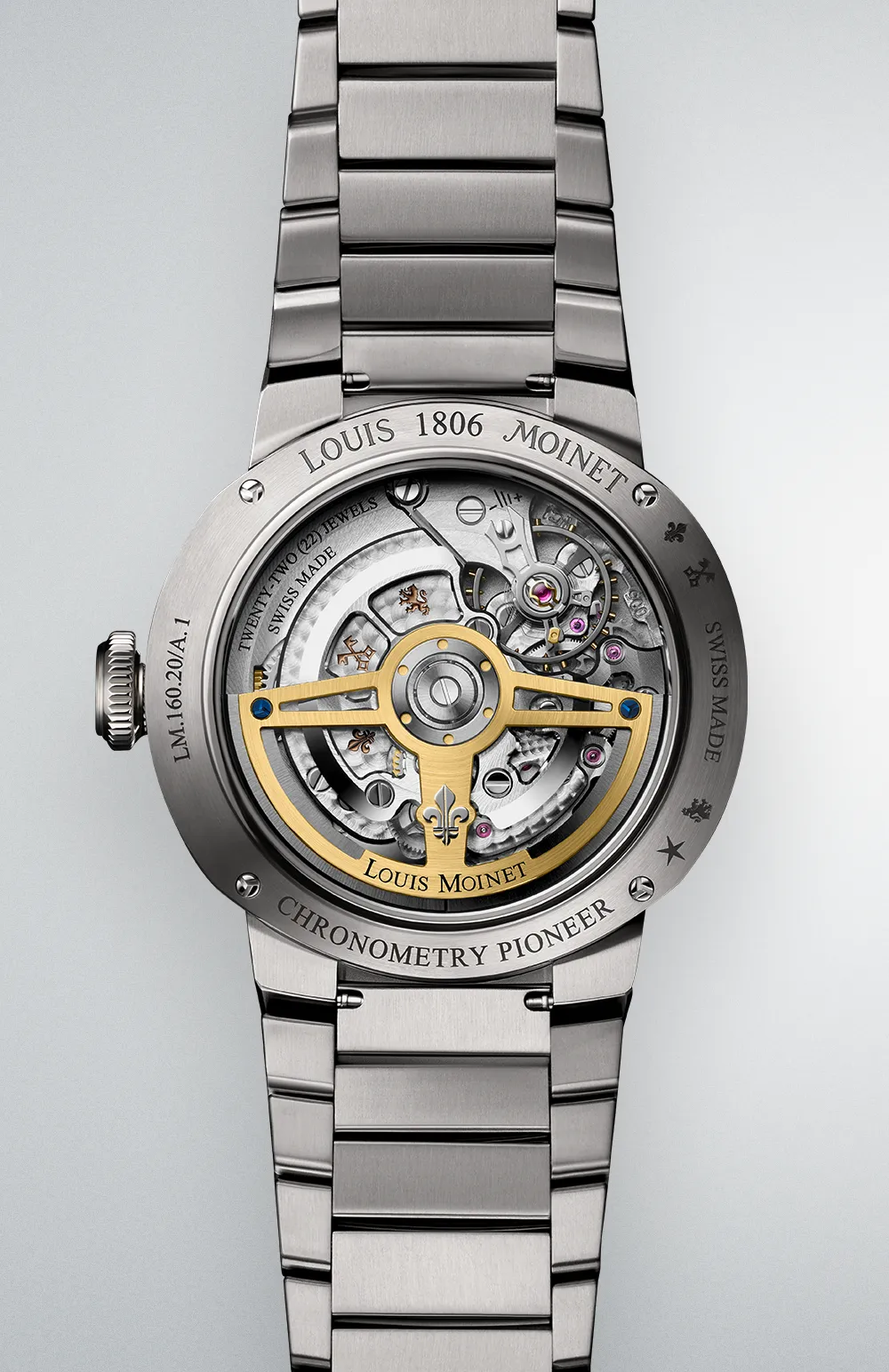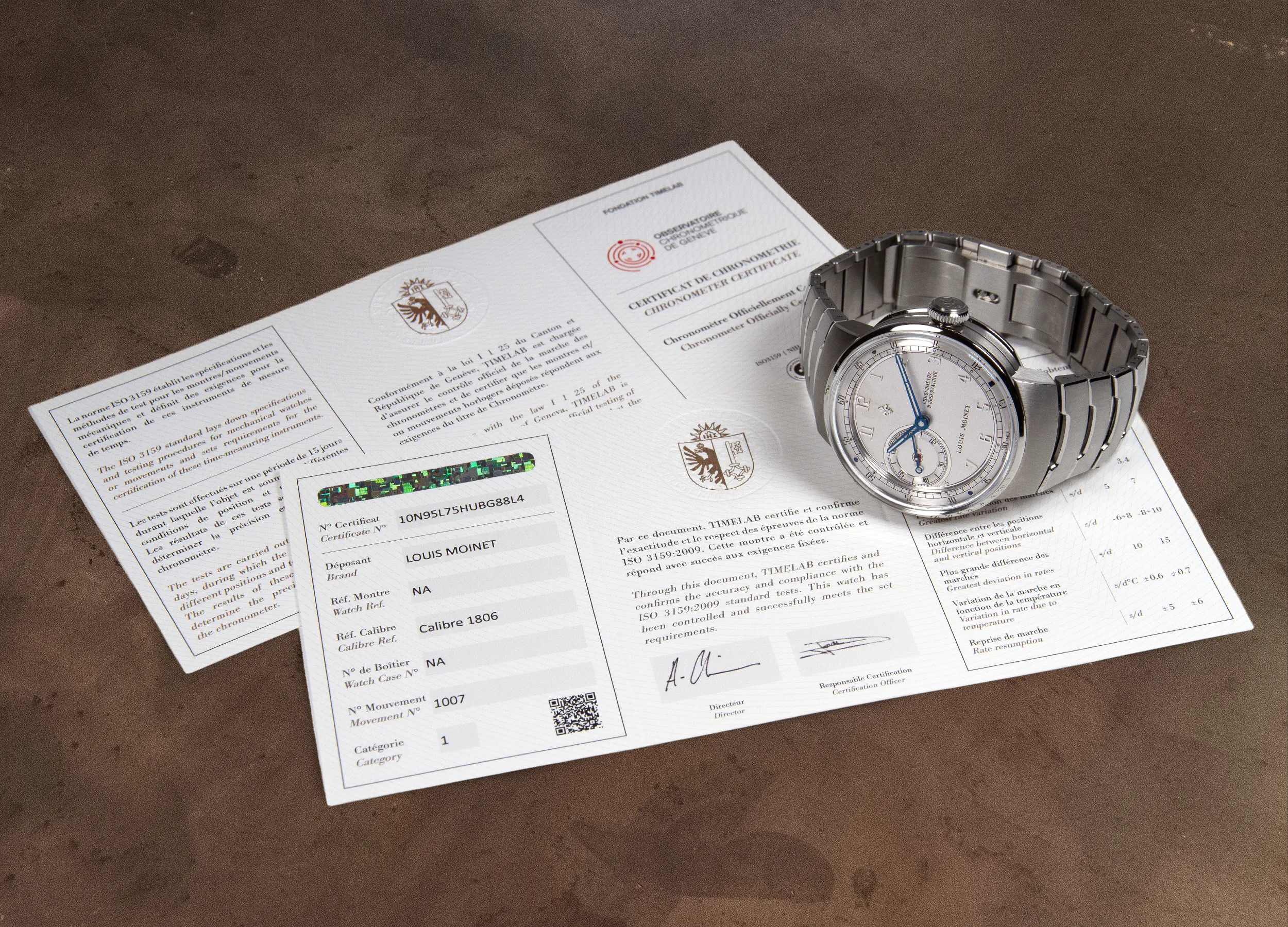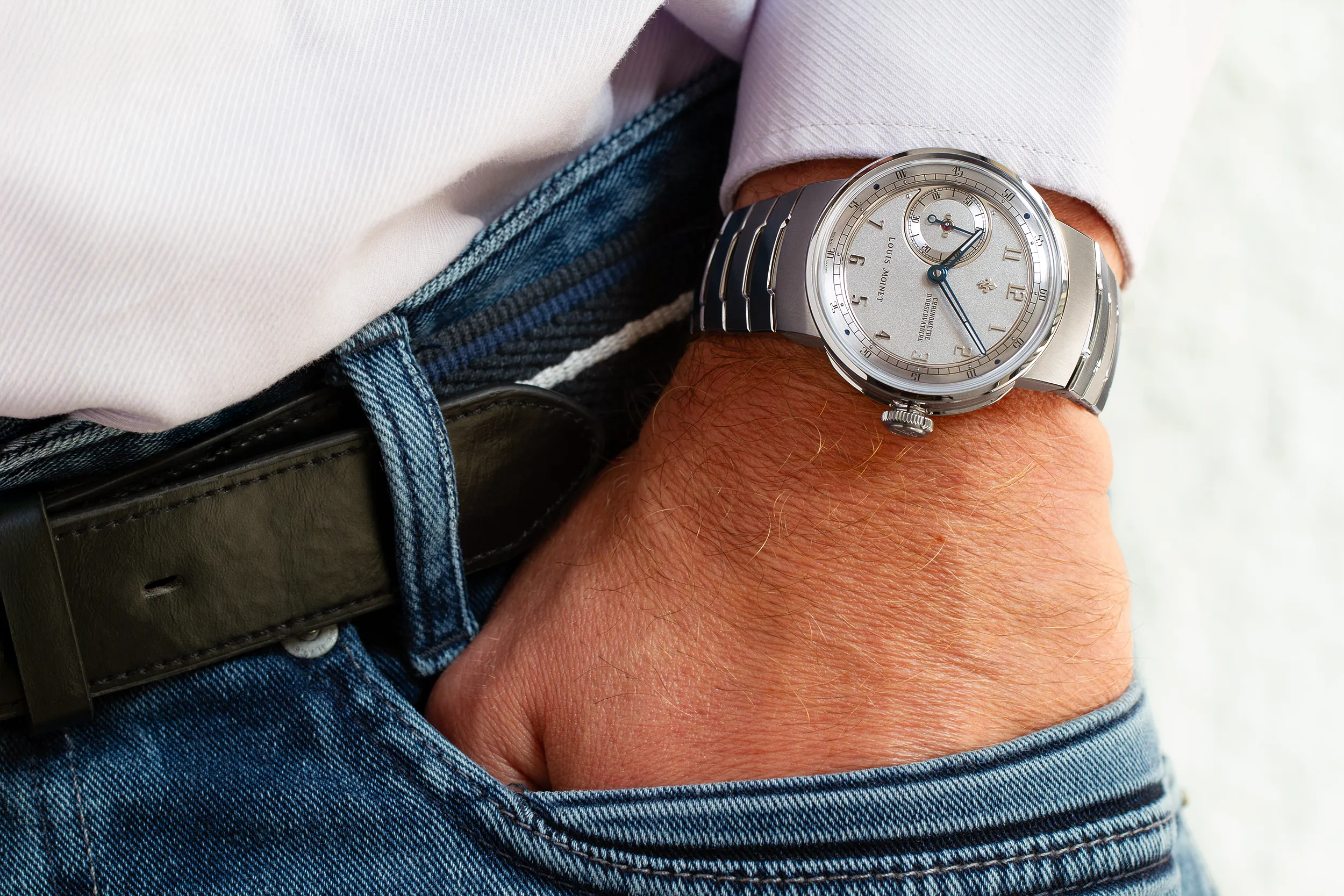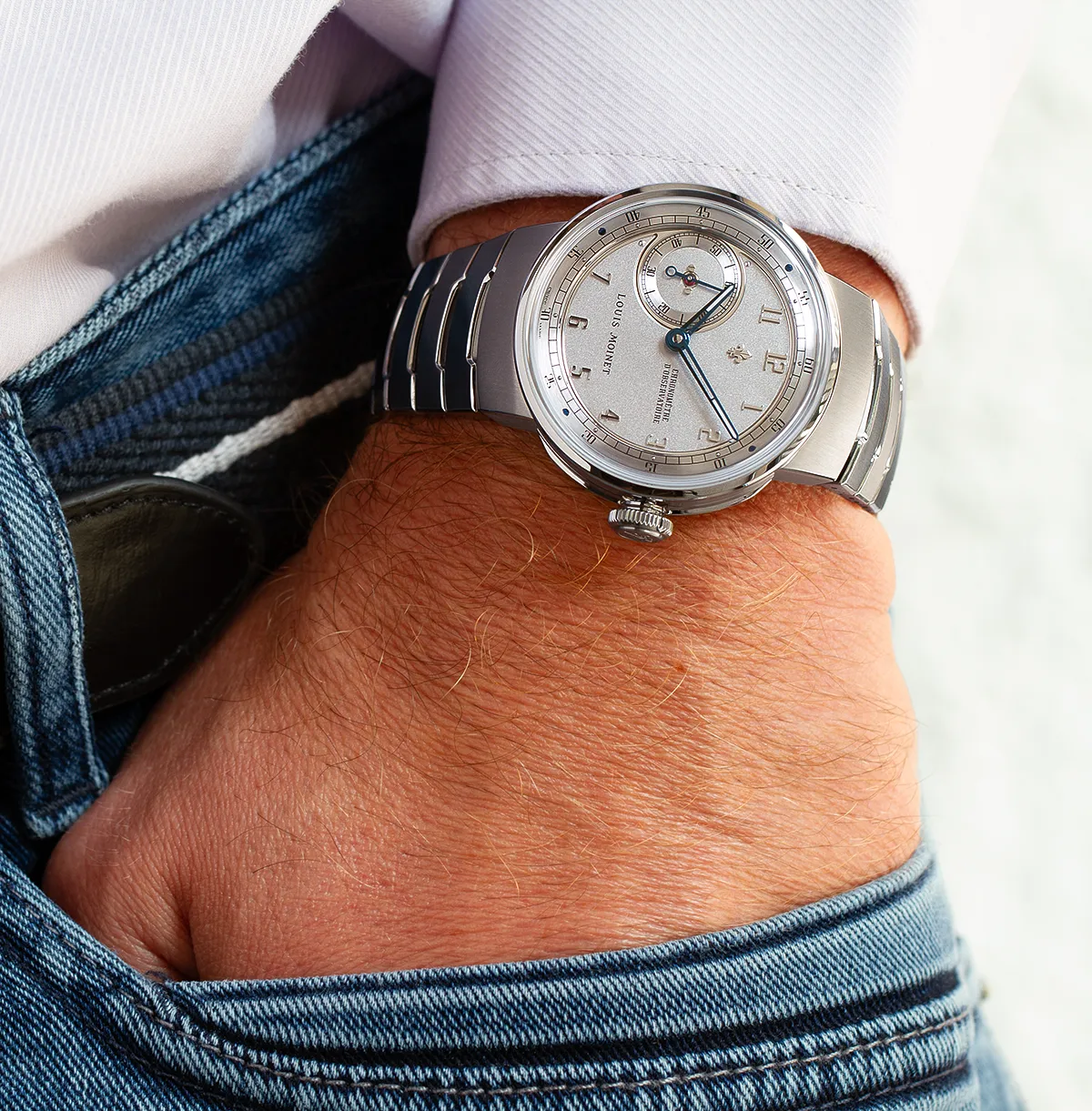Grade 5 titanium
LM-160.20.60
Homage to a pioneer of chronometry
Certified by the Geneva Observatory, the 1806 chronometer combines accuracy with reliability. It boasts a resolutely modern aesthetic and also pays homage to horological history through subtle design cues that recall the world's first chronograph. It comes with Louis Moinet’s first ever titanium bracelet.
L'essentiel est de ne pas s'écarter du vrai
Louis Moinet
1806
Louis Moinet, a pioneer in precision timekeeping

“When we think about measuring time, what is genuine to that art is accuracy, exactness and reliability. This quest for precision guided the work of the great watchmaker Louis Moinet. Today, this quest has found a new echo with the 1806, a chronometer certified by the Geneva Astronomical Observatory. A timepiece that also reminds us that astronomy and watchmaking have been intimately linked for centuries. In fact, it was Louis Moinet's desire to measure the movement of the stars that paved the way for modern chronometry.”
Jean-Marie Schaller
CEO & Creative Director

The birth of modern chronometry
Louis Moinet dedicated his life and talent to a very ambitious goal: the precise, scientific measurement of time. His invention of the first-ever chronograph ushered in the era of high frequency, achieving a phenomenal rate of 30 Hz, which was essential for measuring the tierce, or 60th of a second. As president of the Chronometric Society in Paris, he brought together the era's greatest scientists and watchmakers in their shared pursuit of precision. He later crowned his achievements by presenting a chronometer with several important complications at the 1851 Universal Exhibition in London.
Thus, guided by the quest of exact measurement, Louis Moinet laid the foundations of modern chronometry and became its most illustrious pioneer.
1806
Chronomètre d’Observatoire
Since its founding in 1772, the Geneva Astronomical Observatory has been the historic home of Swiss chronometric certification. It perpetuates the tradition of precision contests that marked the nineteenth century.
The new Louis Moinet timepiece, the 1806, has been certified as an observatory chronometer and is thus a part of that tradition. To obtain this designation, each 1806 movement undergoes fifteen days of trials, during which it is tested in different positions and subjected to various temperature variations. The results of these tests provide proof of the chronometer's precision and reliability.
Calibre LM1806
Chronomètre d'Observatoire
Automatic
28800 VPH (4 Hz)
48 hours
Jewels: 22
40.6 mm
Hours, Minutes, Seconds

50 metres

Grade 5 titanium
Folding clasp

Grade 5 titanium
Swiss made

Historic roots, contemporary look
Inspired by history's very first chronograph, the 1806 case draws attention with its understated power. Its Directoire-style semi-bassine silhouette, highlighted by the double gadroon, combines the sobriety of the historical lines with the contemporary lightness of polished and satin-finished grade 5 titanium.
The rhodium-plated dial seems alive thanks to a subtle interplay of satin and bead-blasted finishes. The classic, highly readable numerals convey the rigour of a genuine scientific instrument. The small seconds dial at nine o'clock in the same bead-blasted decor is offset by a polished circular frame, accentuating the depth and clarity of the display.
The minute chapter is arranged on a peripheral flange with a circular satin finish. It is punctuated by twelve blackened nickel cabochons and four blued steel screws, a crucial detail that further evokes the historical roots of this timepiece.
The 1806 dial showcases how traditional watchmaking fits in with a modern look. Classic elements pay homage to the original: the name Louis Moinet appears in its historic typography, while Chronomètre d'Observatoire is displayed in the same font used for the hour numerals.
The slender, openworked hands in blued steel maintain the visual clarity that defined Louis Moinet's original timepieces, while their tips, enhanced with modern SLN luminous material, guarantee immediate legibility in any light. The fine seconds hand stands out with its circular openworked counterweight—a detail that bridges historical craftsmanship with contemporary precision. At the dial's centre, the ruby-set barrel, flanked by two polished screws, adds a technical accent that is both rigorous and refined.
The 1806 dial showcases how traditional watchmaking fits in with a modern look. Classic elements pay homage to the original: the name Louis Moinet appears in its historic typography, while Chronomètre d'Observatoire is displayed in the same font used for the hour numerals.
The slender, openworked hands in blued steel maintain the visual clarity that defined Louis Moinet's original timepieces, while their tips, enhanced with modern SLN luminous material, guarantee immediate legibility in any light. The fine seconds hand stands out with its circular openworked counterweight—a detail that bridges historical craftsmanship with contemporary precision. At the dial's centre, the ruby-set barrel, flanked by two polished screws, adds a technical accent that is both rigorous and refined.
The sapphire crystal caseback reveals an automatic movement certified as an “Observatory chronometer.” Its circular-grained plate serves as a backdrop to the openworked, gilded rotor designed in a purposefully clean, modern, style.
As it spins, it reveals the movement's individual number, guaranteeing authentication and official certification. The four engraved symbols on the caseback represent the company’s core values: exclusivity, creativity, artistry, and design.

Louis Moinet’s first ever titanium bracelet
As for the bracelet, it was given the name “BRIDGE project.” It is the first grade 5 titanium bracelet by Louis Moinet and takes its name from the distinctive wide links that recall a stylised bridge. It is resolutely contemporary, thanks to a unique design, and was conceived as a seamless extension of the case.
Each link seems to flow fluidly into the next, enabling the bracelet to hug the wrist naturally without disrupting the watch's balance. The alternating satin-finished and polished surfaces create a sculptural ensemble that is both graceful and ergonomic.
The prestigious origin
Louis Moinet creations carry extraordinary stories within them, both through the technical advances they embody and the distinguished personalities for whom they were intended. Some were conceived as exceptional commissions, such as the clock created for Napoleon in 1806—a landmark work whose date now inspires the name of this new timepiece.
To wear the 1806 observatory chronometer is to continue a story that has been evolving for more than two centuries...

